The Mango Power E is a high-end portable power station that features an impressive 3.5kWh capacity and 3kW output. This solution is also highlighted by its wheeled luggage-like design, which makes it a mobile device and easy to move around. It also boasts some of the widest operating temperatures, spanning from -30C to 60C, which allows it to operate in almost any environment.
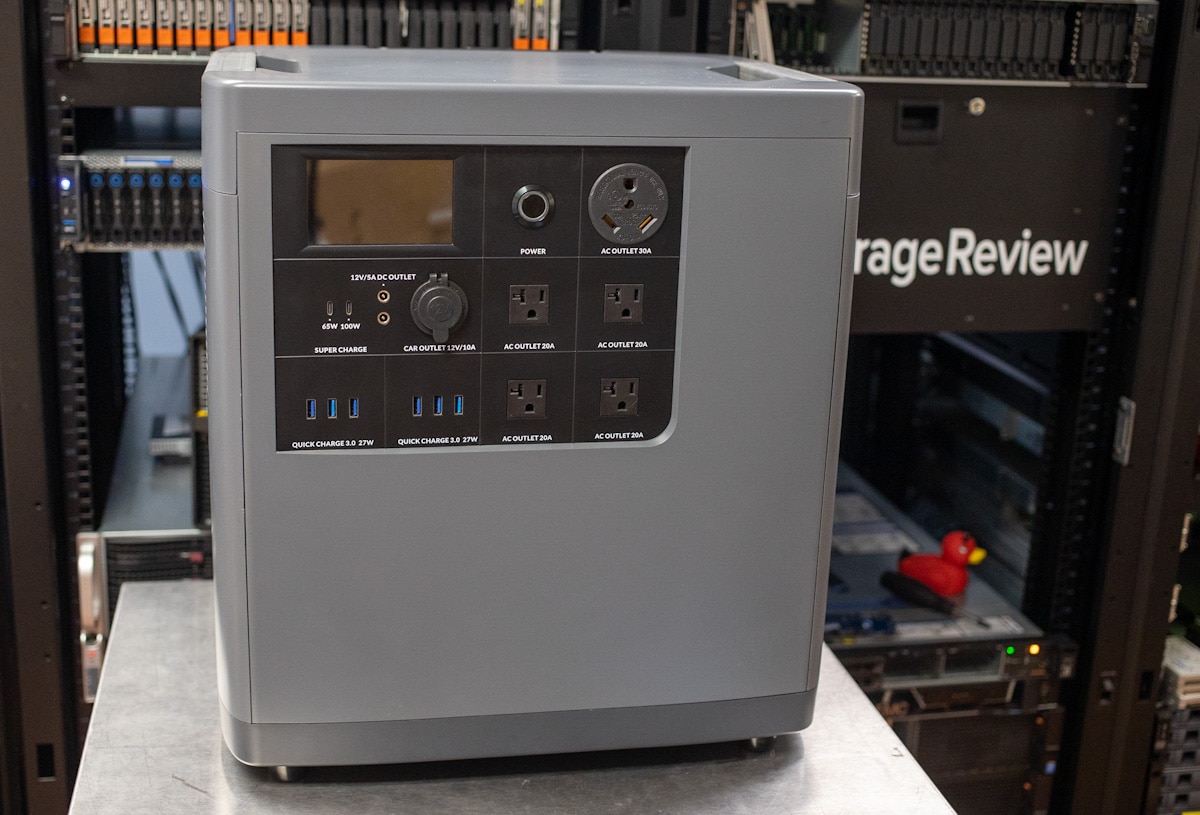
The Mango unit can power all your essential (and most non-essential) appliances during power outages, like computers, refrigerators, modems/routers, laptops, televisions, and more. It’s also a great power generation solution for site backup, camping, road trips, and “off-the-grid” work, like servicing remote data centers or edge infrastructure.
Mango Power E Features and Components
This compact power station separates itself from its competition due to the type of batteries it uses. It’s equipped with the same ultra-durable CATL LFP (lithium iron phosphate) battery cells as leading electric vehicles, allowing the cells to charge much faster (1.1c-rates) and last longer. Mango indicates that it can charge to 80% within one hour.
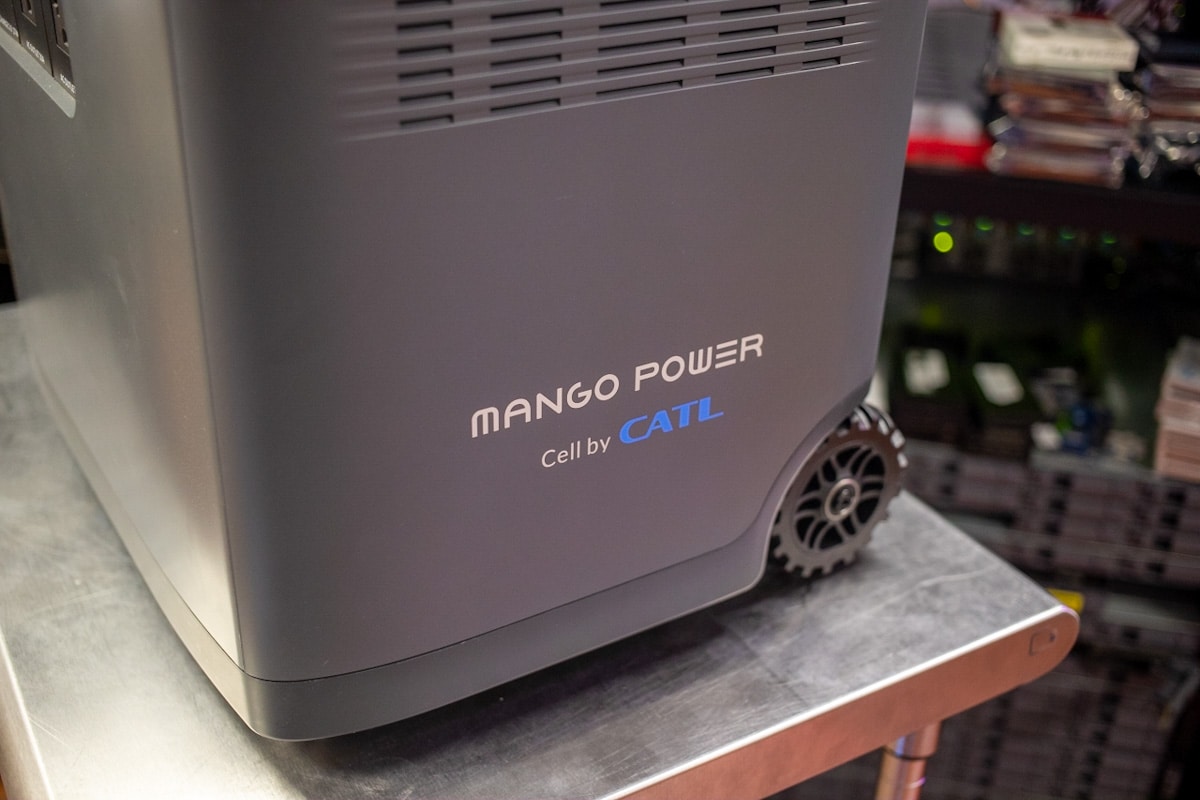
Dubbed by Mango as the “World’s best”, these battery cell types are also much more reliable and can withstand temperatures from -20°C to 60°C. This is noticeably better than its competition, which allows Mango to operate much more smoothly in extreme temperature conditions.
To put this into comparison, Bluetti tops out at a 40C operating temperature while EcoFlow gets a bit higher at 45C. It may not seem much, but the difference from 104/113F to 140F is huge for outdoor use. In many situations, ambient temperature isn’t the only thing working against you in an outdoor setting. You can also get radiant heat from the sun cooking the case, which we’ve seen limit charging capabilities on other units in desert conditions just under the upper limit.
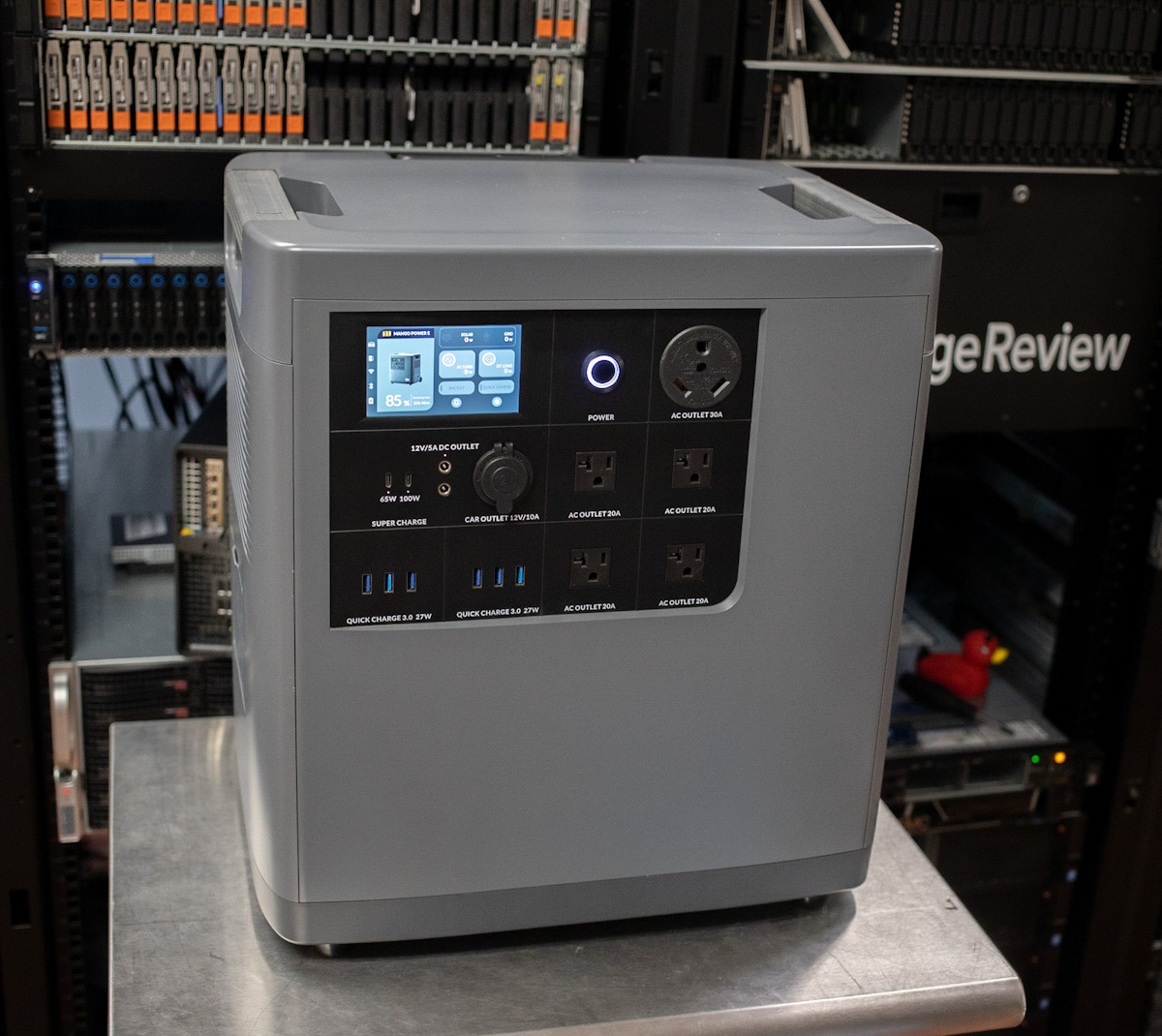
Because CATL LFP cells are larger as well, fewer of them are also needed inside battery packs. This means that system failures are less likely to occur (i.e., fewer points of failure). In addition, these batteries are much safer than traditional NCM batteries, as the latter generates significantly more heat and thus are more likely to short/sport and catch fire.
The company’s mSocket Pro accessory enables you to connect two Mango Power Es together via a power outlet. We weren’t able to test this ourselves; however, you will be able to maximize output to 6kW and your storage capacity to 14kWh when connected to the additional battery. This transforms the Mango Power E into a 240V output high-powered, split-phase generator that can run large power-consuming appliances like heaters, dryers, and even water pumps.
After coupon, the power station sells for $3100 on Amazon.
Mango Power E Mobile App
The Mango Power E also features a free mobile app, which allows you to remotely customize how you store and use its stored energy. With it, you can control charging speeds, schedule specific charging times, and change settings to be more environmentally friendly. At the time of the review, the app was still in its development stages, although a demo was offered to show its capabilities.
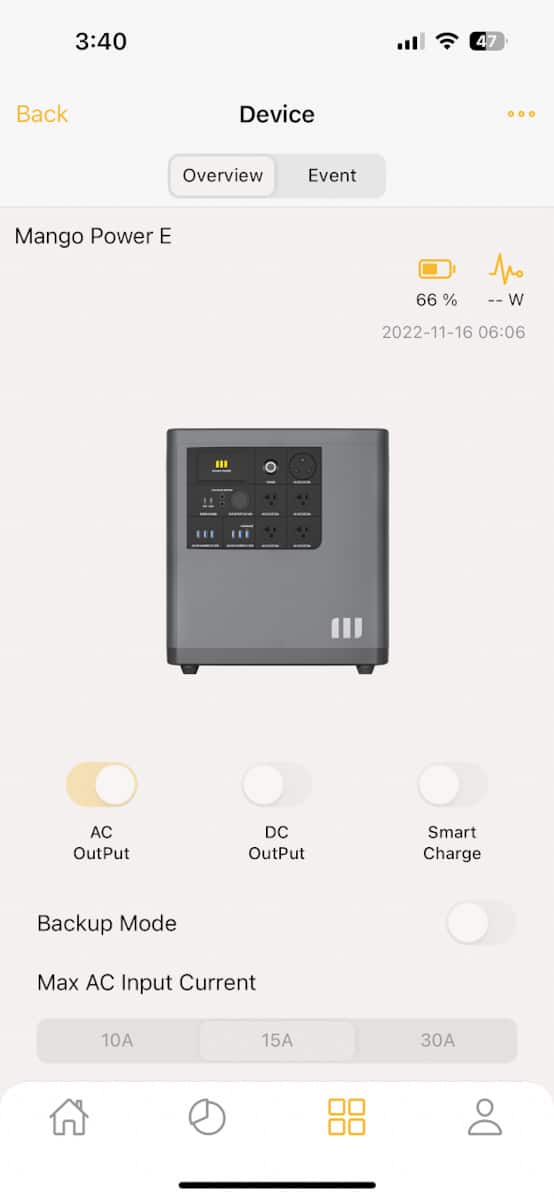
You have a few modes to choose from via the app:
- Backup mode, which prioritizes storing energy to ensure access to ample storage during power outages.
- Time-based mode, which sets battery charging and consumption time based on peak/off-peak electricity costs so you have peace of mind that the Mango Power E will focus on low power costs and/or use more solar power.
- Economical mod, which prioritizes energy from more “green” sources (e.g., solar) to ensure that most of the energy consumption is environmentally friendly.
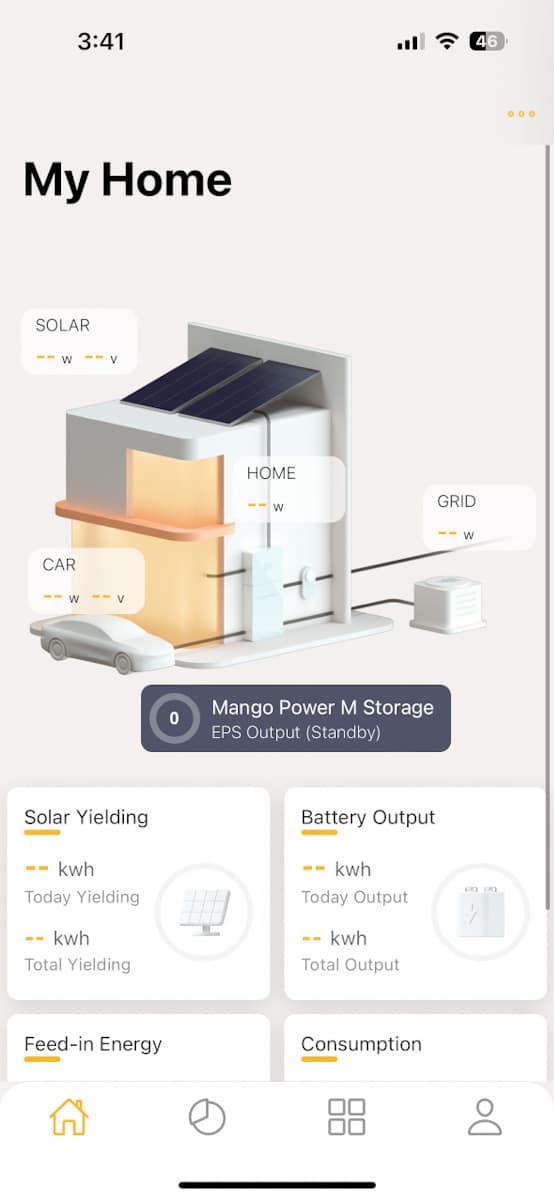
Mango Power Design and Build
As we indicated above, the Mango Power E is a mobile power station due to its dual-wheel design on the base of the device and the extendable handle on the top. We found it easy to maneuver around, similar to using a small wheeled luggage bag. Keep in mind the weight is still up there at 100lbs, which puts features like luggage-style wheels into a must-have category.
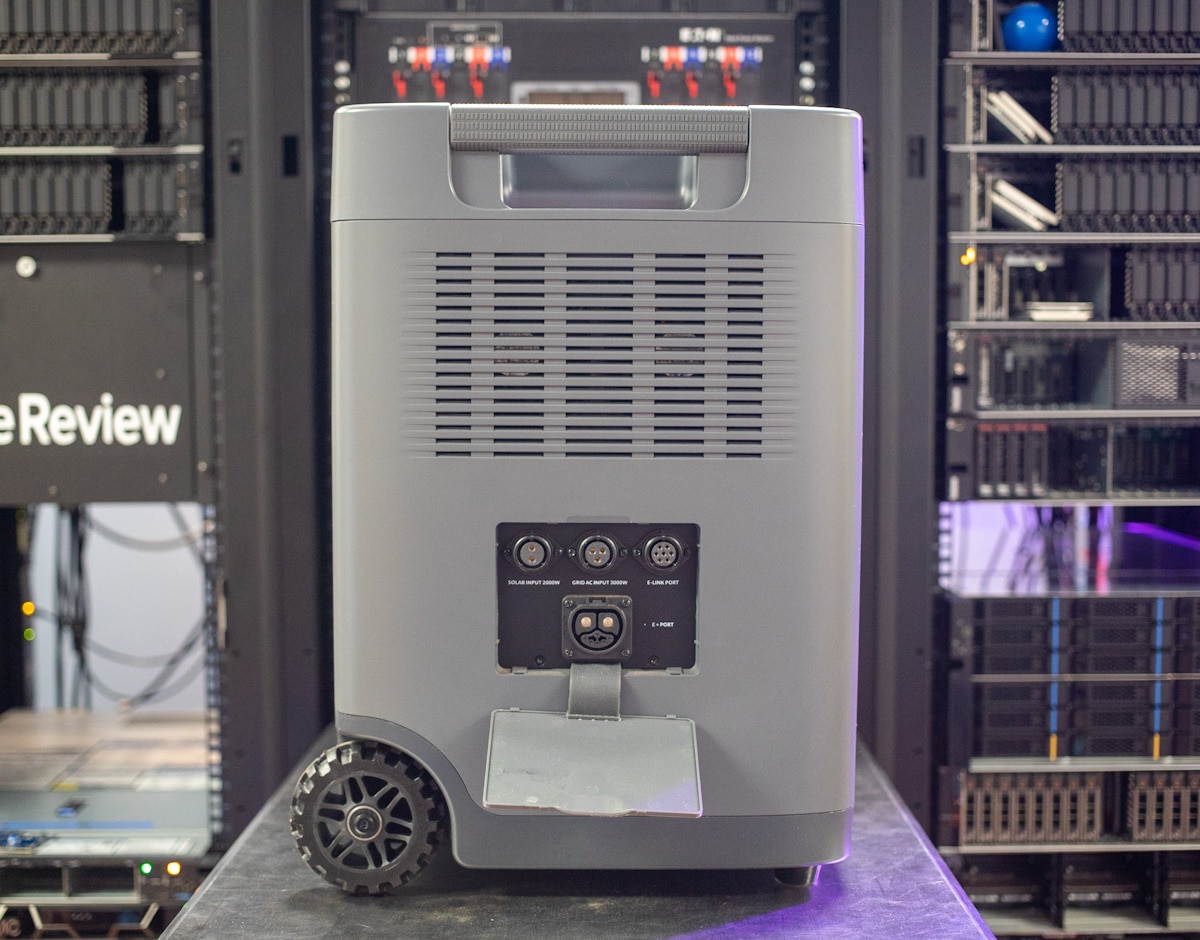
The front panel is home to the 30A AC port, four 20A AC ports, six USB-A charging ports, and two USB-C charging ports. On the top-left corner is the main touch control interface. All functionality and local monitoring is handled through that screen. There is a master power button to turn the unit on and off, although switching the DC or AC power outputs on needs to be performed through the touchscreen.
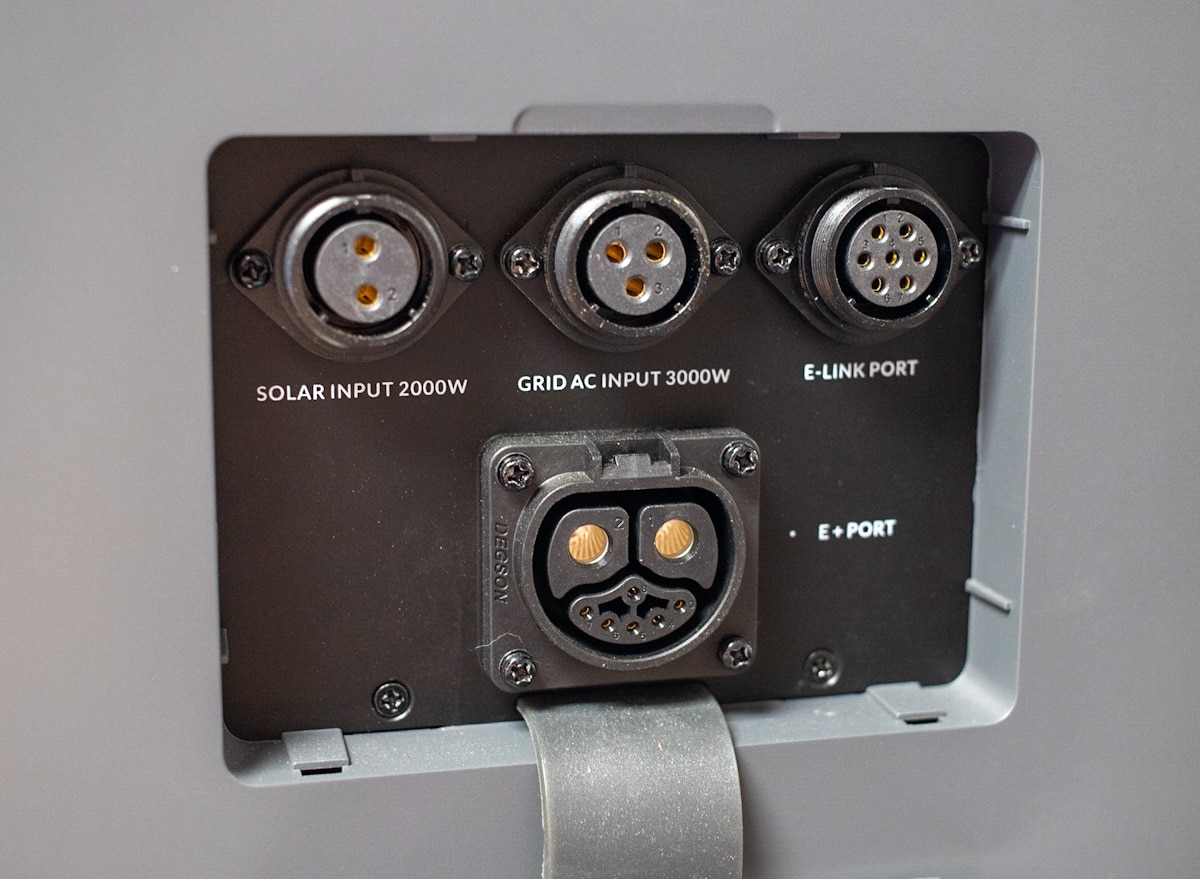
On the left side panel is the ventilation (which is also found on the right side). Below this is the solar, grid AC inputs as well as the E-link and E+ ports.
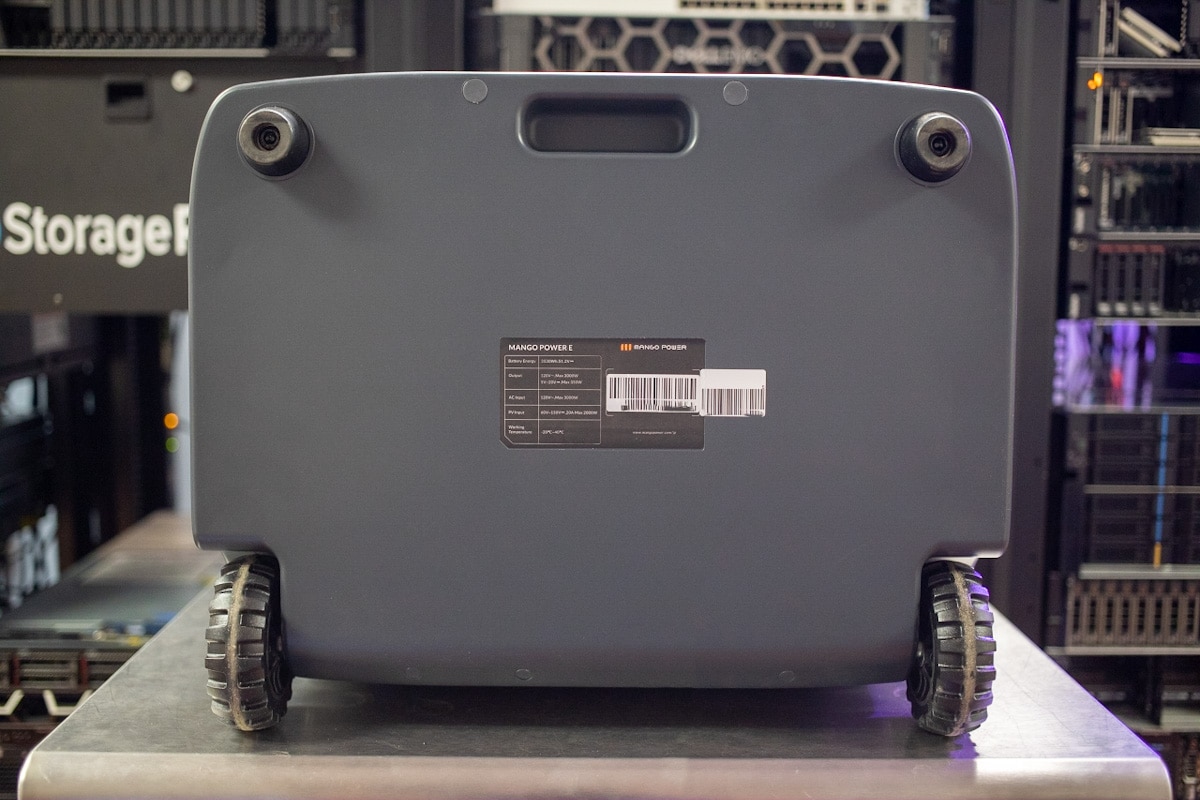
Mango Power E and Battery Specifications
| Product | Mango Power E | Mango Power E Battery |
| Net Weight | 100 lbs (45.4kg) | 73 lbs (33.18kg) |
| Size | 17.8×13.6×19.4 inches (452x345x494 mm) | 17.8×13.6×12.5 inches(452x345x318mm) |
| Working Temperature | Charging: -20°C~60°C Discharging: -30°C~60°C |
Charging: -20°C~60°C Discharging: -30°C~60°C |
| Warranty | 5 years | 5 years |
| Certificates | Meets US and International Safety and EMI Standards | Meets US and International Safety and EMI Standards |
| Quick Charge | Recharge to 80% in 1 hour Recharge to 100% in 1.5 hours |
|
| Running Noise | <40dB under no-load <51dB under full-load” |
|
| IP level | IP21 | IP21 |
| Capacity Expansion | Can expand the capacity by one E Battery to 7.06kWh | |
| Power Expansion | Can expand the power by two to 6kW | |
| 240V split phase | With mSocket Pro or mPanel (sold separately), can output 240V split phase, 6000W | |
| Home Backup | Support (need mPanel) | |
| Battery | ||
| Battery Capacity | 3.53 kWh | 3.53 kWh |
| Cell Chemistry | World’s best CATL LFP | World’s best CATL LFP |
| Life Span | Capacity Retention >70% after 6000 cycles (@25℃, +0.5C/-0.5C) | Capacity Retention >70% after 6000 cycles (@25℃, +0.5C/-0.5C) |
| Battery Management Systems | Over Voltage Protection, Overload Protection, Over Temperature Protection, Short Circuit Protection, Low-Temperature Protection, Low Voltage Protection, Overcurrent Protection | Over Voltage Protection, Overload Protection, Over Temperature Protection, Short Circuit Protection, Low-Temperature Protection, Low Voltage Protection, Overcurrent Protection |
| Max charging rate | Up to 1.1C | Up to 1.1C |
| Input | ||
| Charging Method | AC Wall Outlet, Solar Panel, EV Charger, Generator | AC Wall Outlet, AC Adapter |
| AC Charging | Max 3000W | Max 3000W (by connected to MPE)/AC Adapter |
| Solar Charging | Max 2000W (60V-150V) | |
| EV AC Charging Spot | Adapter needed | |
| Generator | ||
| Inverter | ||
| Rated AC Output Power | 3000W, 120V AC, 60Hz | |
| Power of Over-load | 3150W<load≤3750W, 5mins; 3750W<load≤4500, 60s 4500W<load≤4800W, 10s 4800W<load, less than 40ms |
|
| Maximum Power Point Trackers | 1x, Support Both Roof and Portable Solar Panels | |
| Inverter Efficiency | Up to 88% | |
| Output | ||
| Output Ports | 16 | 3 |
| AC Output | 4 x 20A | |
| USB-A | 6 x QC 3.0 27W | 1 x QC 3.0 27W |
| USB-C | 1 x PD 65W+1 x PD 100W | 1 x PD 100W |
| Car Power Output | 12V/10A | 12V/10A |
| DC5521 Output | 2x12V/5A | |
| AC RV Port | 30A | |
| Smart Control | ||
| Connection | Bluetooth and Wi-Fi | |
| App Remote Control | Yes | |
| OTA Upgrade | Yes | |
| USB Firmware Update | Yes | |
| Customized Mode | Backup Power Mode / Economical Mode / Time-based Control Mode | |
| Smart Measurement | Yes | |
| Smart Energy and Carbon Footprint Report | Yes | |
| Smart Notifications | Yes | |
| Screen | ||
| Size | 4.3 inches | |
| Touch Screen | Yes | |
| Resolution Ratio | 480 x 800 | |
| Screen pigment | 16.7M colors | |
| Safety | ||
| Smart Self-Check System | Yes | |
Mango Power E Usage
The Mango Power E brings a lot of power capabilities and battery capacity to the table, packed with input and output options. We put the Power E through its paces in our lab with charge and discharge tests as well as some creative power loads to put some perspective on what all you can do with a power station this large. For reference, the Mango Power E has a rated capacity of 3.53kWh with its CATL LFP battery pack.
In our initial full discharge test, we measured an output capacity of 2.72kWh with a 350W load applied. Once the system was fully depleted, we recharged the platform with an accumulative power load of 3.64kWh. That is one of the most efficient we’ve measured to date compared to the rated battery capacity.
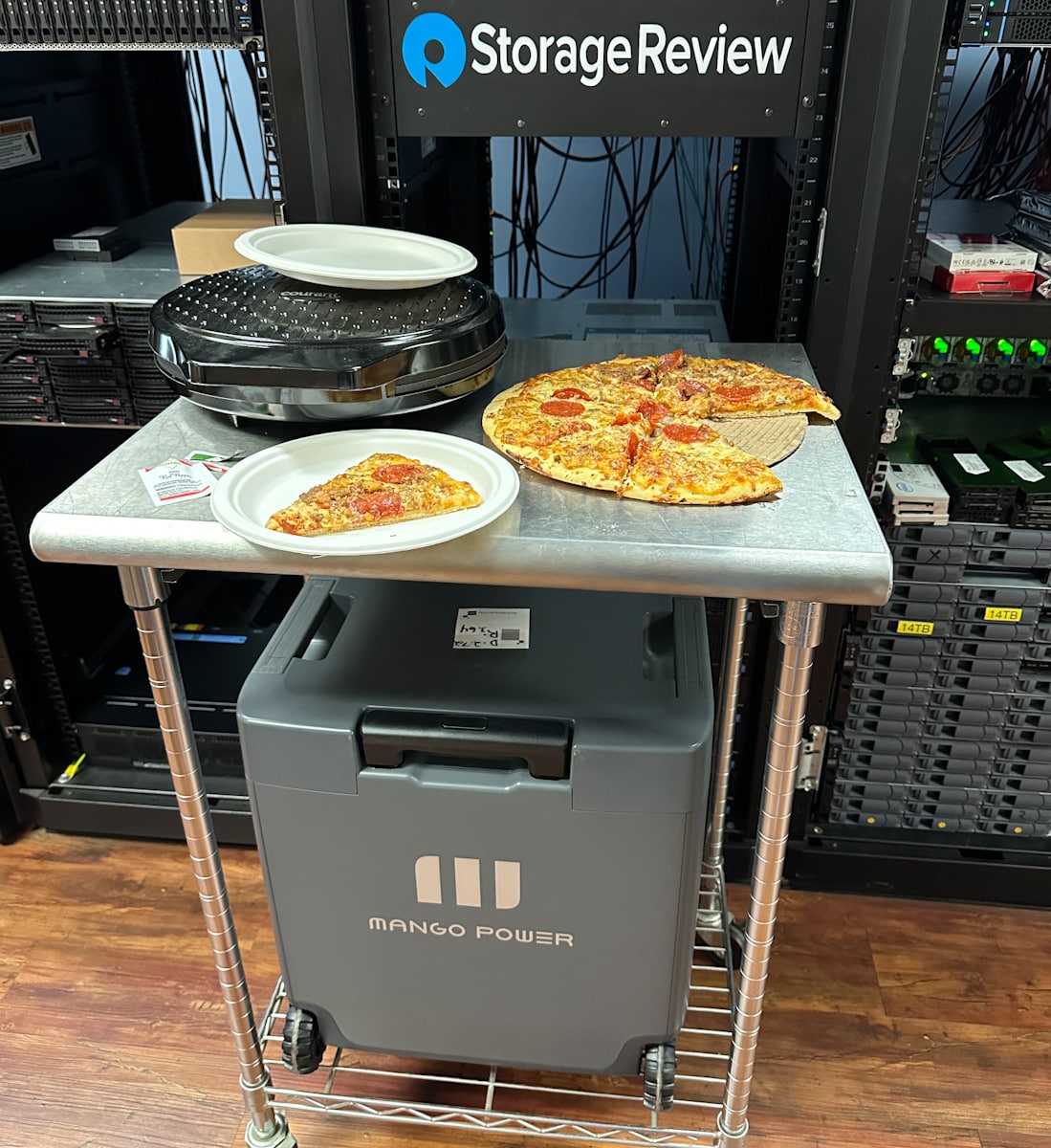
To put some sense of scale to the battery capacity, we leveraged some traditional IT workloads, thinking outside the box. We measured the total power draw to brew a cup of coffee with a Kuerig coffee maker as well as the power needed to fully cook a pizza.
In terms of pizza output, the Mango Power E used 0.2kWh of its battery capacity to preheat and then fully cook a pizza. Based upon our full discharge tests, that gives the Power E a rated capacity of 13.6 pizzas. Putting our focus on the coffee capacity though, we measured the total power required to brew a K-cup from scratch at 0.03kWh. That puts the total cups of coffee at an impressive 90.7 until the unit is depleted.
Back in the data center through the Mango Power E does have a lot to offer with its impressive 3.5kW inverter output and backup battery capabilities. Unlike inverter models that require an AC to DC charging block, the direct AC input into the Mango Power E allows it to float power demands as a backup device.
Off normal AC line power, it has settings to charge at 10A or 15A, which gives some padding for circuits that may have other devices also running on them. For faster charges, you can also select a higher 30A level when you have the optional charge cable attached. The unit also supports a wide range of DC charge options, peaking out at 2,000W to support faster charge times off solar panels.
Conclusion
The Mango Power E is an impressive portable power station, featuring 3.5kWh capacity, 3kW output, and a highly mobile (but heavy) design. Designed to power all essential (and many non-essential) appliances during power outages, Mango’s new power station is also a great power solution for camping, road trips, and “off-the-grid” teleworking.
The most unique (and important) part of the Power E is that it features the same ultra-durable CATL LFP battery cells as leading electric vehicles. This brings many benefits to Mango’s power station, such as faster cell charging (80% capacity within just one hour of charging), larger cells (which means more reliability due to the need for fewer cells), and charges last longer.
In addition, it can withstand more extreme temperature conditions, indicating an operating temperature range of -20°C to 60°C. This puts it far ahead of any other portable power station we’ve worked with to date, that top out at 40 or 45C. For users leveraging these systems off the grid that might have to deal with sun heat-soak, this is a huge amount of padding to keep the unit operational during the day.
Overall the Mango Power E checks a lot of boxes for power-hungry users. While its app wasn’t fully completed for this review, it does offer BT and WiFi connectivity which enables local and remote control. For on-site use, the touchscreen interface handles the primary functions and gives nice reporting to watch input and output load across the different interfaces.




 Amazon
Amazon